India is home to a diverse snake population, including many venomous species. While the exact number of snake species is constantly being updated, it is estimated that over 300 species are found in India. Among these, the ‘Big Four’, including Russell’s Viper, Saw-Scaled Viper, Indian Cobra, and Indian Krait (Common Krait), are responsible for a significant number of snakebite-related deaths. These four snakes are responsible for an estimated 46,000 to 60,000 deaths annually in India.
Snakes in India also are given a mythological and cultural significance, often representing Lord Shiva and spirituality in different traditions. While pinpointing any single Indian state with the largest number of snakes is difficult, several states are renowned for their high snake diversity and density. Kerala, with its rich Western Ghats forests, is often cited as having a high snake population and diverse snake species. Other Indian states with significant snake populations include Karnataka (specifically the Agumbe region), Uttarakhand, Madhya Pradesh, Maharashtra, Chhattisgarh, Jharkhand, and the North-Eastern states like Meghalaya and Nagaland.
Let us also have a look at the difference between a poisonous snake and a venomous snake. The terms ‘poisonous’ and ‘venomous’ are used interchangeably, but they have distinct biological meanings based on how toxins are delivered. Poisonous snakes’ toxins are absorbed through the skin or ingestion. Eating a poisonous snake can be extremely dangerous. While venomous snakes inject their hollow fangs.
In this article, we list the 10 most venomous snakes in India along with their features, characteristics, and the effect of their venom.
Top 10 Most Venomous Snakes In India
1. King Cobra
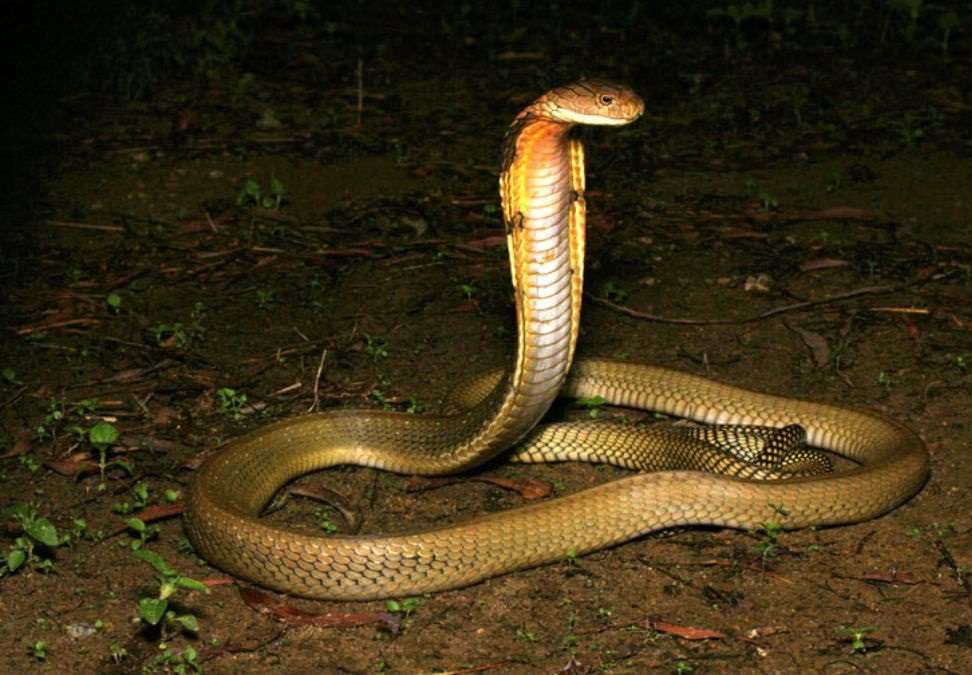
The king cobra is the longest venomous snake in the world. It can grow up to 18 feet long. It is found in thick jungles, cool swamps, bamboo clusters and rainforests across India. They are highly carnivorous and they even prey on other snakes including the non-venomous rat snake, other cobras, kraits and small pythons.
King cobra venom is a neurotoxin. A bite from a king cobra can cause paralysis, respiratory failure, and death. They can kill a human within 30 minutes (without antivenom). One should reach the nearest hospital immediately.
2. Indian Krait
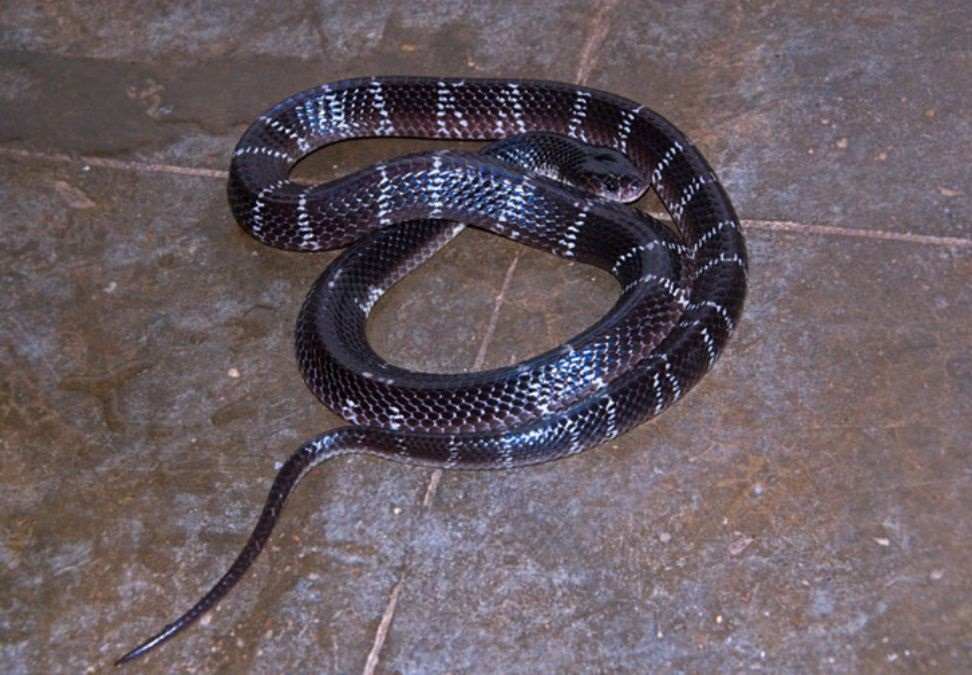
Indian Krait, also known as Common Krait is another highly venomous snake found in India. There are a total of 12 species and 5 sub-species of krait snakes in the world. They can kill a person within 45 minutes. Common Kraits are relatively small snakes, growing up to 3 feet long. They are often brown or black in colour, with lighter crossbands.
Common krait venom is also a neurotoxin. A bite from a common krait can cause paralysis, respiratory failure, and death.
3. Russell's Viper
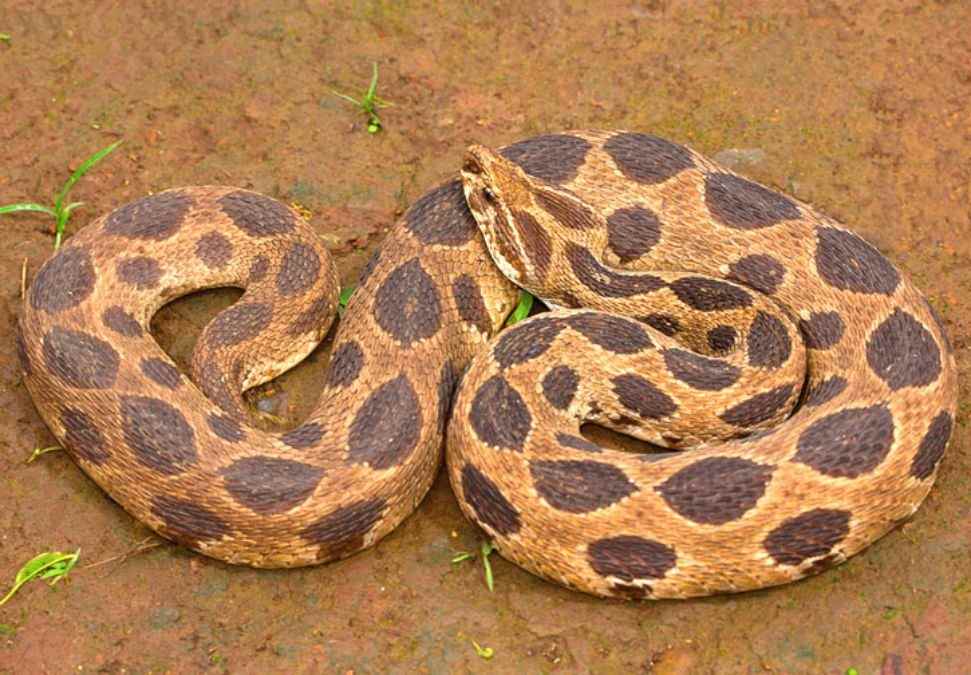
Russell's viper is one of the most common and widespread venomous snakes in India. This venomous snake makes a sizzling noise before it attacks or bites. Their bite can kill a human within 45 minutes (without antivenom). Russell's vipers are nocturnal and can often be found inside camping equipment or automobiles, making them very dangerous. Russell's vipers are relatively large snakes, growing up to 6 feet long. They are often brown or black in colour, with lighter crossbands.
Russell's viper venom is a hemotoxin, which means that it destroys blood cells and tissues. A bite from a Russell's viper can cause severe pain, swelling, and bleeding. It can also lead to organ damage and death.
4. Saw-Scaled Viper
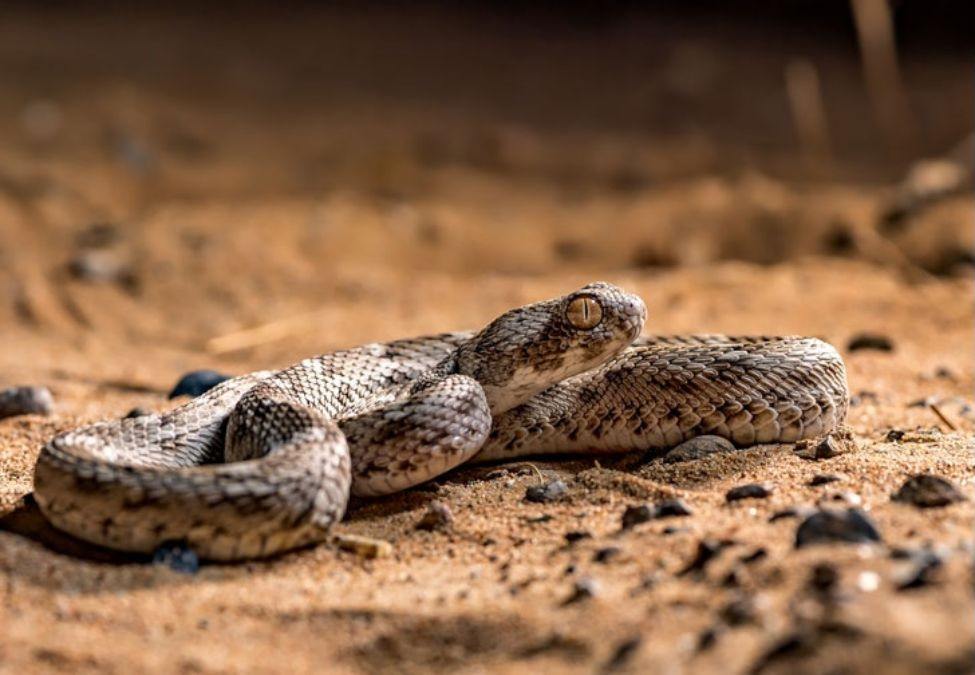
The Saw-Scaled Viper is one of the most venomous snakes in the world. It has the popular name of "little Indian viper". Saw-scaled vipers inhabit sandy areas, rocky habitats, soft soil, and scrublands. They prey on lizards, frogs, and various arthropods such as centipedes, large insects, and scorpions. Saw-scaled vipers are relatively small snakes, growing up to 2 feet long. They are often brown or black in colour, with a zig-zag pattern on their backs.
Saw-scaled viper venom is a hemotoxin. A bite from a saw-scaled viper can cause severe pain, swelling, and bleeding. It can also lead to organ damage and death.
5. Indian Cobra (Naja naja)
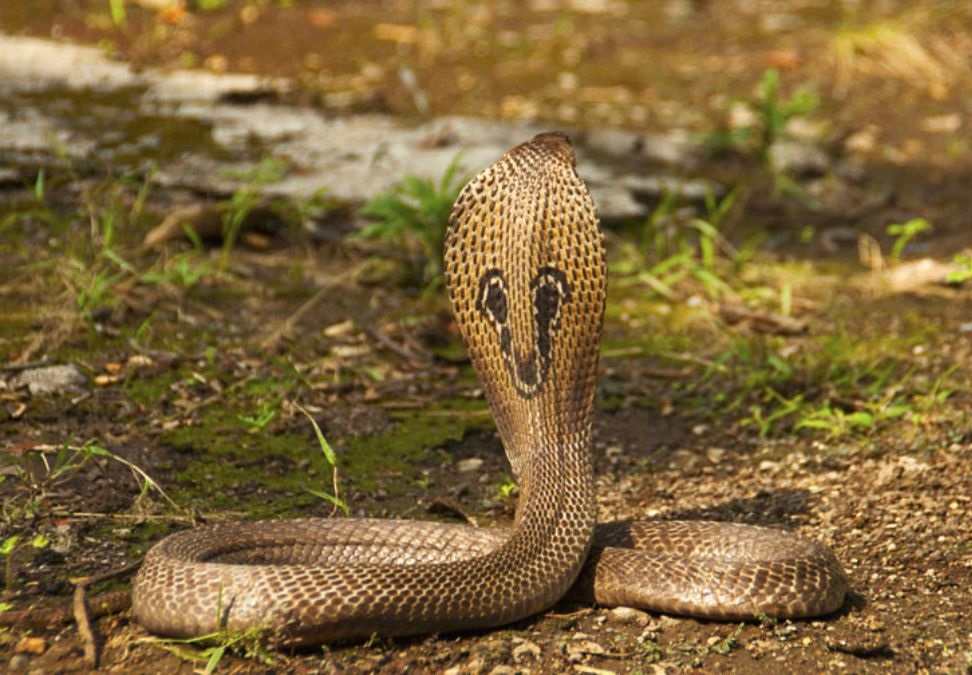
The Indian cobra is one of the most well-known and feared snakes in the world. There are different species of cobras in India, but this particular species accounts for the highest number of snake bites in the country. Indian cobras are relatively large snakes, growing up to 6 feet long. They are easily identified by their distinctive hood, which they flare when threatened.
Indian cobra venom is a neurotoxin, which means that it attacks the nervous system. A bite from an Indian cobra can cause paralysis, respiratory failure, and even death. Their snake bite can kill a person within 2 hours (without antivenom). One should reach the nearest hospital immediately.
6. Malabar Pit Viper

The Malabar pit viper is a venomous snake found in the Western Ghats of India. It is a highly adaptable snake and can be found in a variety of habitats, including forests, plantations, and even urban areas. It is a nocturnal snake and is most active at night. One of the most unique things about the Malabar pit viper is its colour-changing ability. This ability is known as camouflage, and it helps the snake to blend in with its surroundings.
Malabar pit viper venom is hemotoxins. Both pit viper species can cause severe pain, swelling, and bleeding. A bite from these pit vipers can cause severe pain, swelling, and bleeding. It can also lead to organ damage and death.
7. Banded Krait
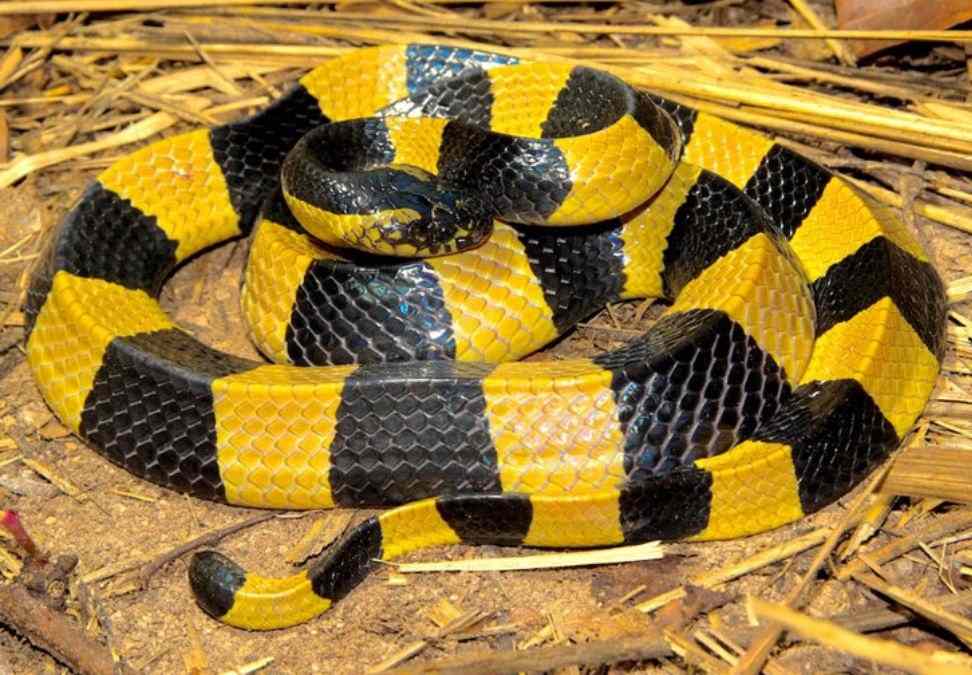
The banded krait is a venomous snake found in the coastal areas of India. It is a relatively small krait, growing up to 3 feet long. can be easily recognized by its distinctive cross bands in black-yellowish colour. It feeds on the coral reefs of India and is mostly found underwater. This venomous snake is often confused with the eels.
Banded krait venom is a neurotoxin. A bite from a banded krait can cause paralysis, respiratory failure, and death.
8. Bamboo Pit Viper
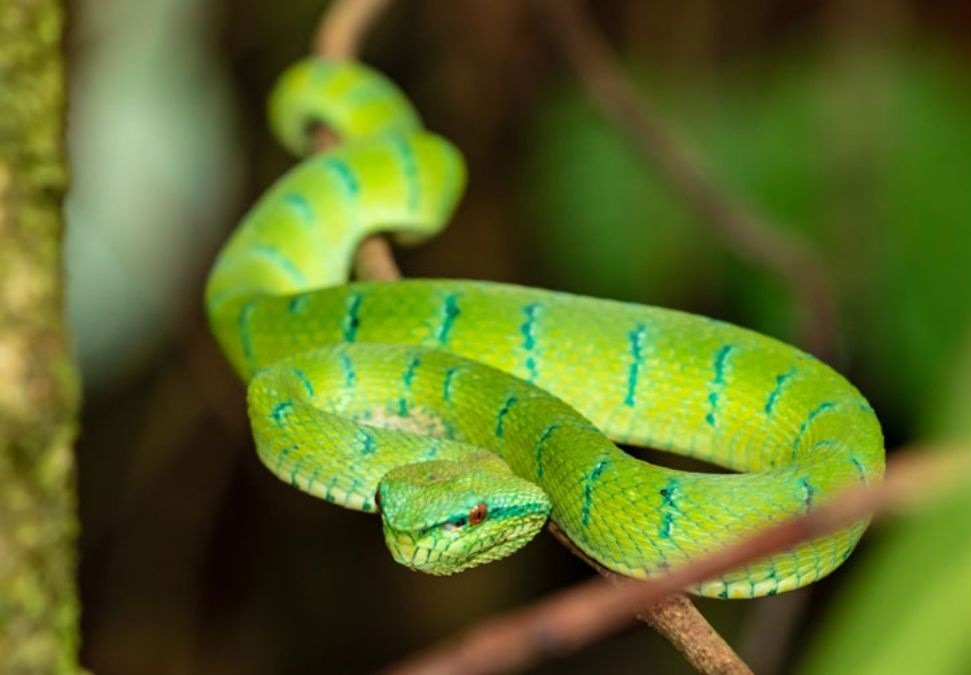
The bamboo pit viper is a venomous snake that is mostly found in the mountainous regions of the Western Ghats in Southern India. It grows at a length of 2.5 feet. It lives in all arboreal habitats such as the vines, bushes, and bamboo of India. This venomous snake has a heat-sensing system. The snake detects infrared radiation from a warm-blooded animal, and the pit organ sends a signal to the snake's brain. The brain then interprets the signal and helps the snake to locate its prey.
Bamboo pit viper venom is a hemotoxin. A bite from a bamboo pit viper can cause severe pain, swelling, and bleeding. It can also lead to organ damage and death.
9. Hump-Nosed Pit Viper
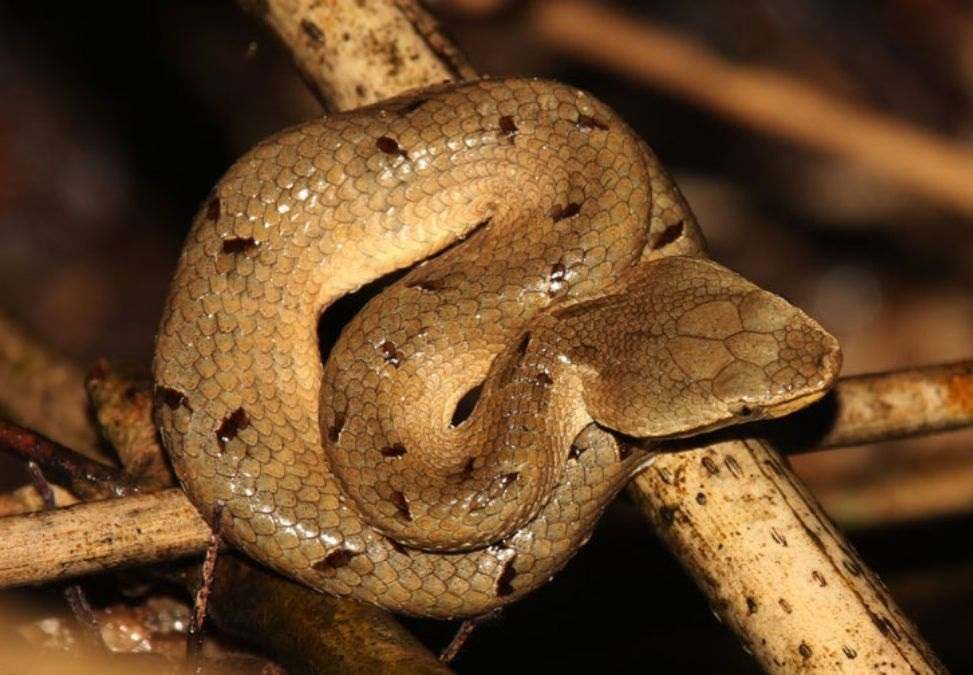
Another pit viper species is the hump-nosed pit viper. It is a small but venomous snake that is usually active in the night and hunts in the early morning. The hump-nosed pit viper is a small but venomous snake found in thick forests, coffee plantations and hilly regions parts of South India. It is found in a variety of habitats, including forests, grasslands, and agricultural areas. Hump-nosed pit vipers are often brown or black in colour, with a distinctive hump on their noses.
Hump-nosed pit viper venom is a hemotoxin. A bite from a hump-nosed pit viper can cause severe pain, swelling, and bleeding. It can also lead to organ damage and death.
10. Andaman Pit Viper
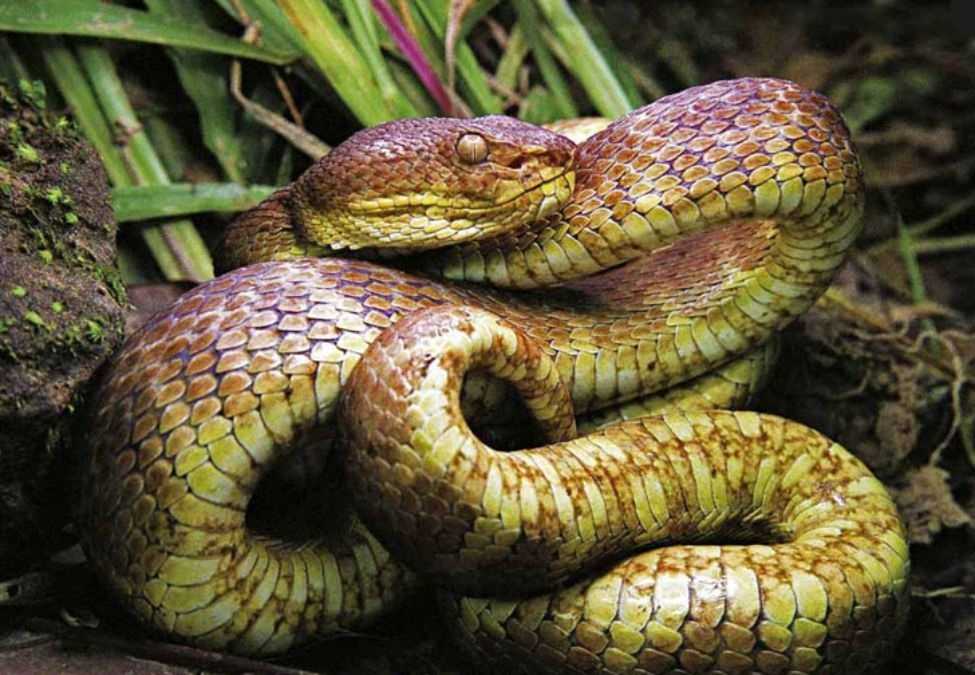
The Andaman pit viper is a venomous snake found in the Andaman and Nicobar Islands. It is commonly known as Mangrove Pit Viper, Purple-spotted Pit Viper, and Shore Pit Viper. It is a nocturnal snake and is most active at night. It is a relatively small pit viper, growing up to 2 feet long. Andaman pit vipers are often green or brown in colour, with darker crossbands.
Andaman pit viper venom is a hemotoxin. While the venom of the Andaman pit viper is not usually fatal to humans, a bite from this species can lead to gangrene if not treated properly. Gangrene is a serious condition that can cause tissue death.
Also read: Top 10 Countries With Highest Oil Consumption In 2025
Comments
All Comments (0)
Join the conversation